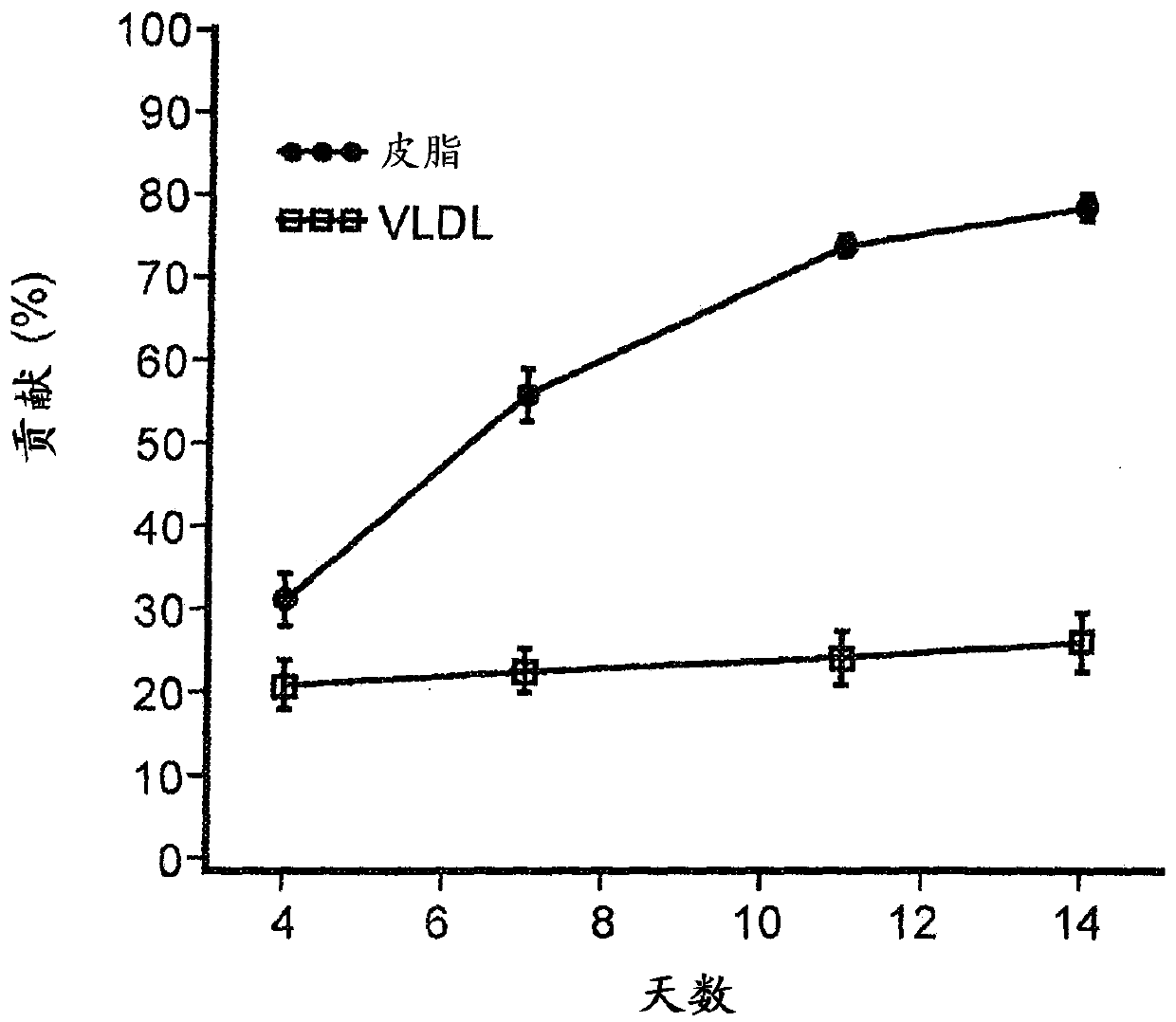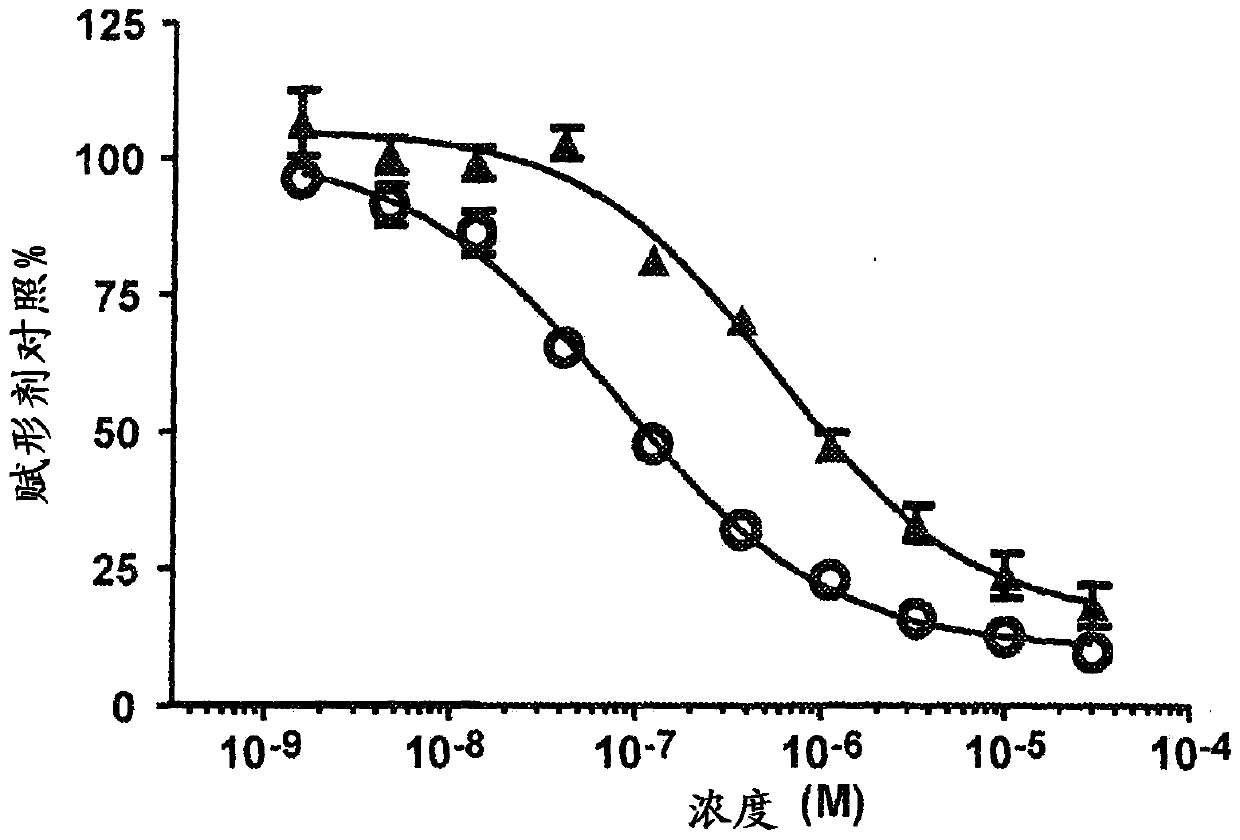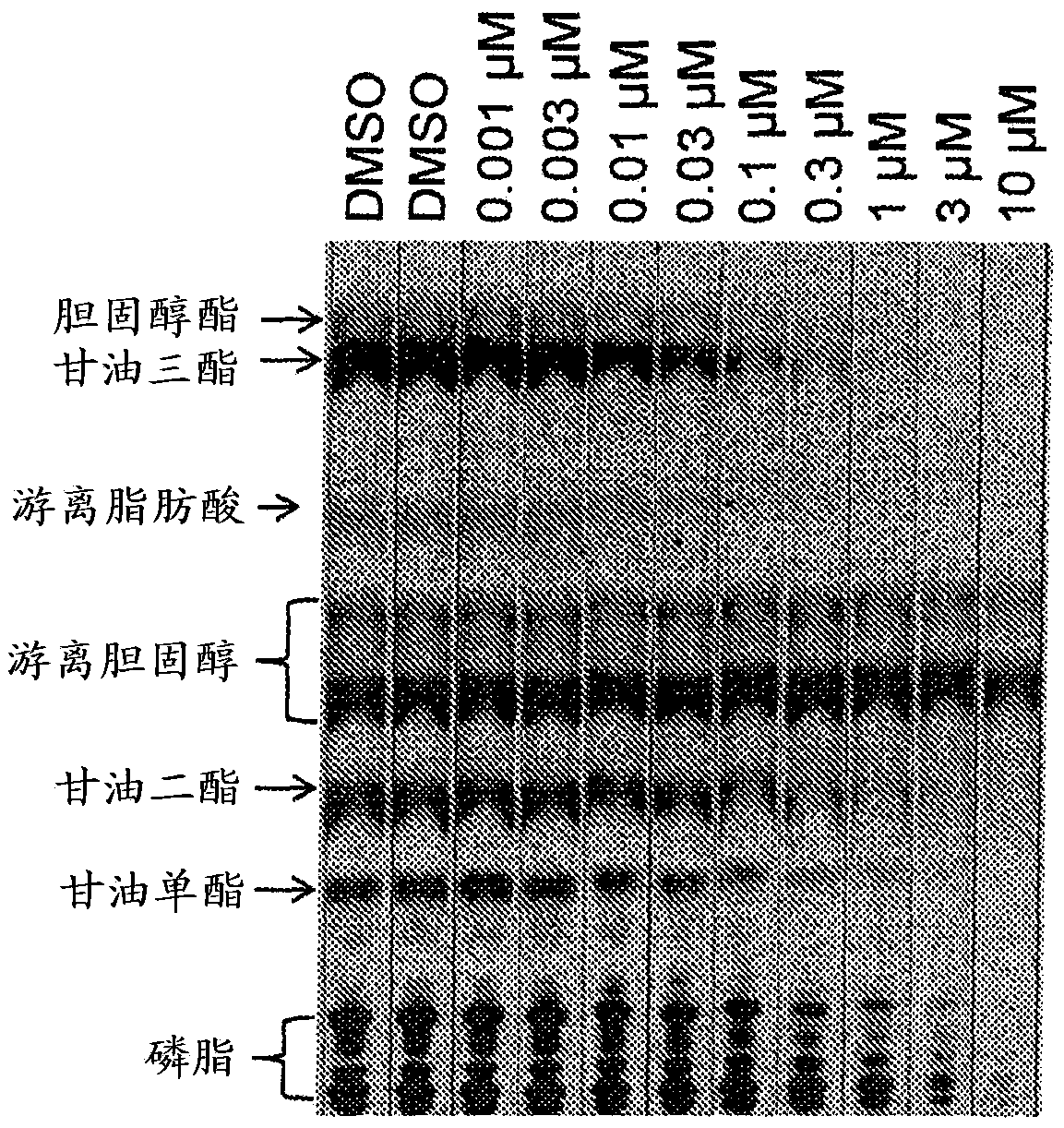Use of acetyl-coa carboxylase inhibitors for treating acne vulgaris
A technology of acetyl coenzyme and carboxylase, which is applied in the direction of medical preparations containing active ingredients, organic active ingredients, skin diseases, etc., and can solve problems such as dose limitation
- Summary
- Abstract
- Description
- Claims
- Application Information
AI Technical Summary
Problems solved by technology
Method used
Image
Examples
Embodiment 1
[0030] Example 1 Inhibition of Sebum Production in Healthy Human Volunteers
[0031] Sebum production was evaluated in healthy volunteers treated with 200 mg BID of Example 1 or placebo (PBO). as by sebum meter (Courage+Khazaka Electronics Company, Cologne, Germany), the dose of Example 1 can reduce the sebum production (adjusted by PBO) in healthy volunteers by 49% (from baseline) ( Figure 4 ). Analyzes were used at baseline and at the end of the study The specific lipid class of the collected sebum demonstrated a 66% (PBO-adjusted) reduction in sebum triglycerides (the major lipid class of sebum) (Fig. 5). The amount of sebum free fatty acids and waxy esters (which are also dependent on DNL) was also reduced in Example 1 treated subjects (Figure 5). In contrast, free cholesterol (which is DNL independent) showed no change relative to PBO (data not shown). The amount of squalene (which is also DNL independent) showed a 2.6-fold increase relative to PBO. Since squalen...
Embodiment 2
[0298]
[0299] 1-Isopropyl-1’-(7-methoxy-2-naphthoyl)-4,6-dihydrospiro[indazole-5,4’-piperidin]-7(1H)-one
[0300] Triethylamine (304 mg, 3.00 mmol) was added to 7-methoxy-2-naphthoic acid (202 mg, 1.00 mmol) and 1-isopropyl-4 in dichloromethane (15 mL), 6-Dihydrospiro[indazole-5,4'-piperidin]-7(1H)-one (329 mg, 1.05 mmol) solution, then add 1-hydroxybenzotriazole (149 mg, 1.10 Millimoles). The reaction mixture was stirred at room temperature for 15 minutes, then 1-ethyl-3-(3-dimethylaminopropyl)carbodiimide (211 mg, 1.10 mmol) was added and the reaction was stirred for 15 hours. Then, the mixture was diluted with dichloromethane and washed with saturated aqueous sodium bicarbonate and brine. The organic phase was dried over magnesium sulfate, filtered and concentrated under reduced pressure. Analysis by flash chromatography (20-100% 1:9 methanol / heptane in ethyl acetate, 24 g Gold column) the resulting residue was purified to yield 342 mg (79%) of 1-isopropyl-1'-(7-m...
Embodiment 3
[0303]
[0304] 1’-(2-Aminoquinoline-7-carbonyl)-1-isopropyl-4,6-dihydrospiro[indazole-5,4’-piperidin]-7(1H)-one
[0305]
[0306] 1'-(2-(tert-butylamino)quinoline-7-carbonyl)-1-isopropyl-4,6-dihydrospiro[indazole-5,4'-piperidine]-7(1H) -ketone
[0307] The title compound was prepared by a method similar to that described in Example 25, Step 1 of US2012 / 0270893 (incorporated herein by reference).
[0308] +APCI(M+H)474.6; 1 HNMR (400MHz, CDCl 3 ,δ):7.72(d,J=8.8Hz,1H),7.64(s,1H),7.55(d,J=8.2Hz,1H),7.36(s,1H),7.16(dd,J=8.1, 1.3Hz, 1H), 6.59(d, J=9.2Hz, 1H), 5.36(quin, J=6.6Hz, 1H), 3.31-3.96(m, 4H), 2.79(s, 2H), 2.58(s, 2H), 1.55-1.75 (m, 4H), 1.52 (s, 9H), 1.44 (d, J=6.4Hz, 6H).
[0309]
[0310] 1'-[(2-Aminoquinolin-7-yl)carbonyl]-1-isopropyl-1,4-dihydrospiro[indazole-5,4'-piperidin]-7(6H)-one Trifluoroacetate
[0311] Add trifluoroacetic acid (0.90 mL, 12 mmol) to 1'-(2-(tert-butylamino)quinoline-7-carbonyl)-1-isopropyl-4,6-dihydrospiro[indazole- 5,4'-piperid...
PUM
| Property | Measurement | Unit |
|---|---|---|
| diameter | aaaaa | aaaaa |
Abstract
Description
Claims
Application Information
 Login to View More
Login to View More - R&D
- Intellectual Property
- Life Sciences
- Materials
- Tech Scout
- Unparalleled Data Quality
- Higher Quality Content
- 60% Fewer Hallucinations
Browse by: Latest US Patents, China's latest patents, Technical Efficacy Thesaurus, Application Domain, Technology Topic, Popular Technical Reports.
© 2025 PatSnap. All rights reserved.Legal|Privacy policy|Modern Slavery Act Transparency Statement|Sitemap|About US| Contact US: help@patsnap.com



